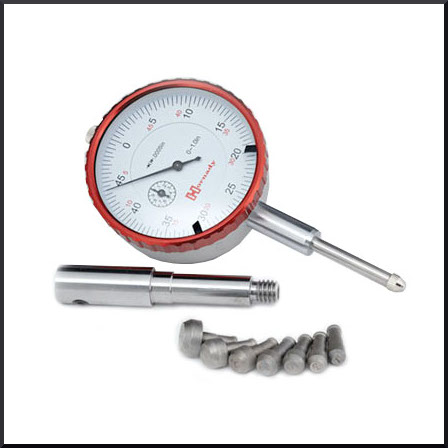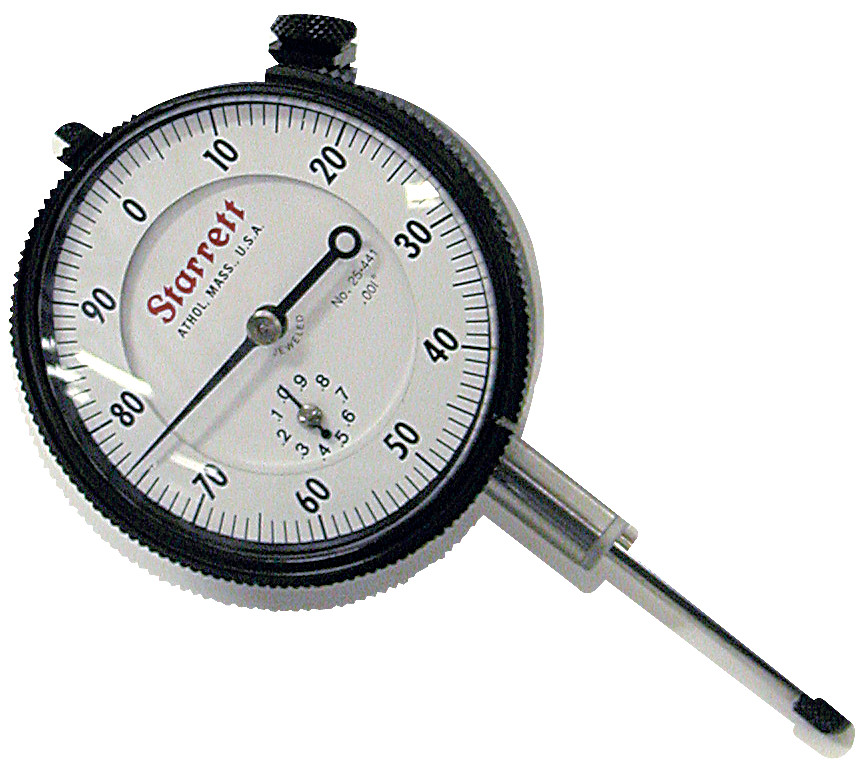In handloading, there’s always another gage or means to measure. But which really matter, and when and why? READ MORE

Glen Zediker
Last time I started on a recollection of a recent event, which was a project (that is ongoing) teaching my son Charlie how to reload ammunition for his AR15.
As said then, learning to set up tooling is intertwined with learning to measure pertinent dimensions, and that experience involves learning to use measuring tools, and choosing which ones to use. That led to a look at the most essential and indispensable measuring tool of all: the caliper.
There’s more tools to be had, and to be used, to be sure.
As he was looking through my boxed and binned collection of tools I had fetched out for the project, he had a lot of “what’s that’s” and “when do we need this’s” and I kept telling him what it was, what it did, and that we didn’t really need it for what we were doing.
Most of that other stuff was measuring tools, very specialized measuring tools, gages. A commonly recommended tool for a handloader’s kit is a micrometer. These use a threaded barrel that’s turned in to a stop to measure the thickness or length of something (any lateral measurement). A “mic” is a more precise tool than a caliper, usually reading down another step, into the 0.0001 inches range.

A mic is useful for measuring bullet diameters, for instance, or sizing die expander buttons. A specialized mic, called an inside or tubing micrometer, is the most precise way to measure case wall thicknesses. These have a ball end to more accurately mate with the curved shape of a case neck.
As with calipers, mics can be either manual or digital. Digital is a whopping lot easier to read, mostly faster to read, because there’s another layer of graduations to count toward an answer, in effect, on the barrel of a manual mic. No shock, a good mic usually costs more than an equally good caliper.
I can’t count too high recollecting the times I’ve used my mic in handloading. I use it more building rifles, measuring trigger pin diameters and the like.

For me, the more useful means to check and note neck wall thicknesses (probably the most commonly applied use of a micrometer by in-depth handloaders) is a specialty gage that works off a dial indicator. These have a ball-end like an inside mic. Then the quality of the dial indicator matters a whopping lot. Good ones are expensive, but, in my experience, worth it. Take extreme careful care of your dial indicator!

That measuring device, the dial indicator, is the heart of a few other measurement fixtures I’ve used, like a concentricity fixture to check the runout of cases or loaded rounds. One of these “spinners” is a good investment for someone who wants to get a little farther along toward perfecting ammunition, or at least being able to segregate it. The expense isn’t great, and the collected and applied results can be most beneficial. Most of these also provide a means to configure the appliance to check and record neck wall or case wall thicknesses. The accuracy is, as suggested, dependent on the quality of the dial indicator. Since most indicators have a “standard” 1/4-in. diameter shank, it’s usually possible to ramp up a fixture to incorporate a higher-precision dial if wanted.

I have owned and used a good number of seriously specialized measurement tools. I unfortunately can’t say they ever really helped, or at least they didn’t help me for the targets I was facing. Long range and Benchrest shooters tend to be behind the development and production of tools such as bullet bearing surface comparators. As anticipated, this contraption actually measures and compares bearing surface area bullet to bullet. As with a more common caliper-mounted comparator, the idea is to measure through a box of bullets and segregate them into batches. The idea is that the bullets that are more nearly the same will perform more nearly the same on target. Whether those efforts are going to manifest in a smaller group is a combination of ammunition component quality to start, rifle component quality, and, no doubt, shooter skill.

I’ve known folks to check bullets using an electromagnetic appliance to gauge concentricity and, some think, much more respecting the internal structure and balance of each bullet measured. If you’ve never seen or heard of one, check out a Vern Juenke Bullet Inspector. Some say voodoo, some say magic. I can’t say I saw any difference.

So, meandering back to the point of this: all these different measuring tools and appliances do have specific points and places in handloading. These points and places can and have been, and no doubt will again be topics for specific articles.
Beyond that good caliper, though, there’s a very short list of measuring tools I will recommend as “must haves.” Top of that list is a cartridge headspace gage (which is used with that caliper). That’s beyond wise. Beyond that, a good concentricity fixture with a decent dial indicator might actually give some feedback that will improve a group for the most of us. Another is a bullet comparator, useful for those who want to do seating depth experiments, along with a gage to determine the distance to the lands in the barrel.
However, it is possible to load x-ring ammo without ever operating a micrometer. Promise!
Check out Forster spinner HERE
Check out neck wall thickness gage HERE
Check out micrometers HERE
The preceding is a adapted from information contained in from Glen’s books Top-Grade Ammo and Handloading For Competition. Available HERE at Midsouth Shooters Supply. Visit ZedikerPublishing.com for more information on the book itself, and also free article downloads.








